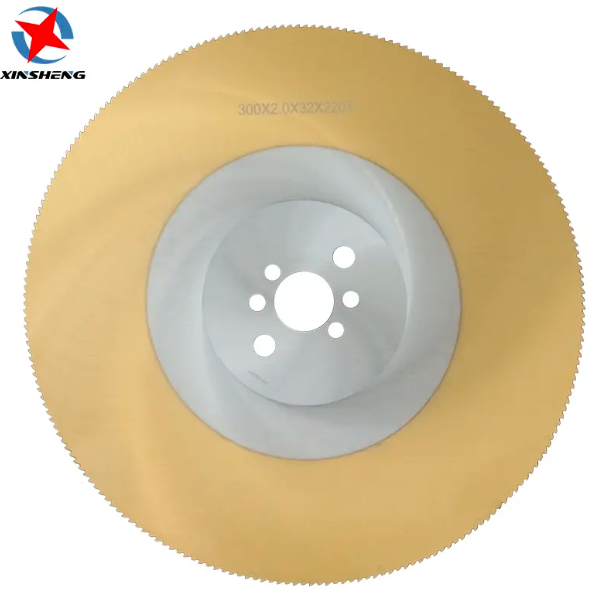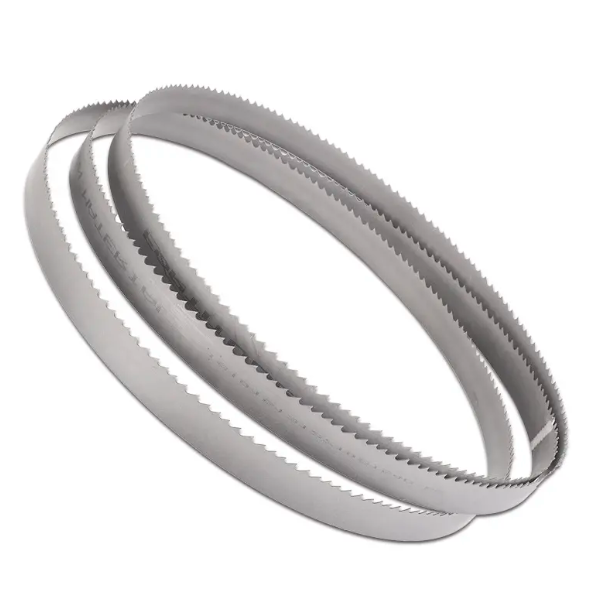In the world of metal processing, precision and efficiency are crucial. As industries continue to thrive on productivity, the need for advanced cutting tools becomes increasingly important. Among them, bimetallic band saw blades emerged as a revolutionary solution. This article will take an in-depth look at the evolution, design and benefits of bimetallic band saw blades, highlighting their significant contribution to the metalworking industry.
The evolution of bimetallic band saw blades:
The birth of bimetal band saw blade:
Bimetal band saw blades were developed as an improvement over traditional carbon steel saw blades. Introduced in the 1960s, they are made by welding high-speed steel (HSS) tips to a flexible and durable alloy steel backing. This combination combines the superior cutting capabilities of high-speed steel with the flexibility and durability of alloy steel, resulting in a cutting tool that revolutionizes the metalworking industry.
Advances in manufacturing technology:
Over the years, manufacturing technology has evolved and bimetallic band saw blades have been enhanced. Advanced methods such as electron beam welding and laser cutting have improved the accuracy and accuracy of welding high-speed steel tooth tips to the backing. In addition, advances in tooth geometry and tooth profile further optimize cutting performance, ensuring cleaner cuts, longer blade life and less material waste.
Design and advantages of bimetallic band saw blades:
Tooth shapes and variations:
Bimetallic band saw blades are available in a variety of tooth profiles, including regular, variable, and hooked. These profiles are designed to improve chip evacuation, increase cutting efficiency and reduce heat build-up during cutting. Various tooth profiles enable precise cutting of a variety of materials, including metals of varying hardness and thickness.
Enhanced durability and blade life:
Bimetallic band saw blades are known for their durability and extended blade life. High-speed steel tooth tips ensure excellent cutting performance, providing excellent wear resistance and hardness. The alloy steel backing, on the other hand, gives the blade flexibility and toughness, allowing it to withstand the repeated stress of cutting without cracking or deforming. The combination of these materials results in significantly longer blade life compared to traditional carbon steel.
Versatility and precision:
Bimetal band saw blades offer the versatility to make precise cuts in a variety of materials, including ferrous and non-ferrous metals, plastics and wood. They are able to cut a wide range of materials without having to constantly replace blades, saving time and effort. Additionally, precise tooth profiles and improved cutting performance ensure accurate cuts, reducing the need for secondary finishing operations.
Cost-effectiveness:
While the initial cost of a bimetal band saw blade may be higher than a carbon steel blade, its long service life and superior cutting performance translate into significant cost savings over time. Reducing downtime for blade changes, increasing productivity, and minimizing material waste make it a cost-effective choice for metalworking operations.
in conclusion:
The advent of bimetallic band saw blades has transformed the metalworking industry, delivering superior cutting performance, extended blade life and exceptional versatility. Developments in manufacturing technology and ongoing design improvements have further enhanced their cutting capabilities and durability. As industries strive for precision and productivity, bimetallic band saw blades have become indispensable for achieving optimal cutting results. As they continue to advance, they will likely continue to play a key role in countless metalworking applications for years to come.
Post time: Sep-26-2023


